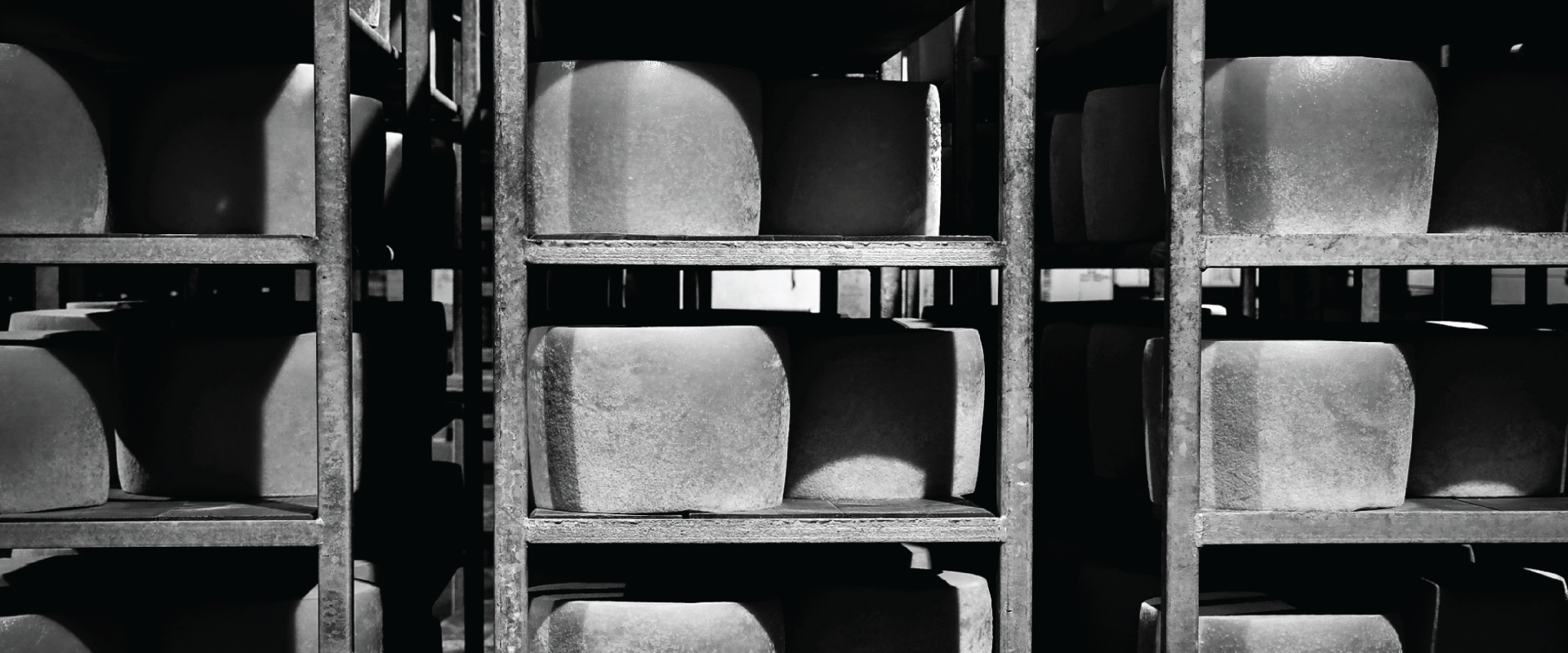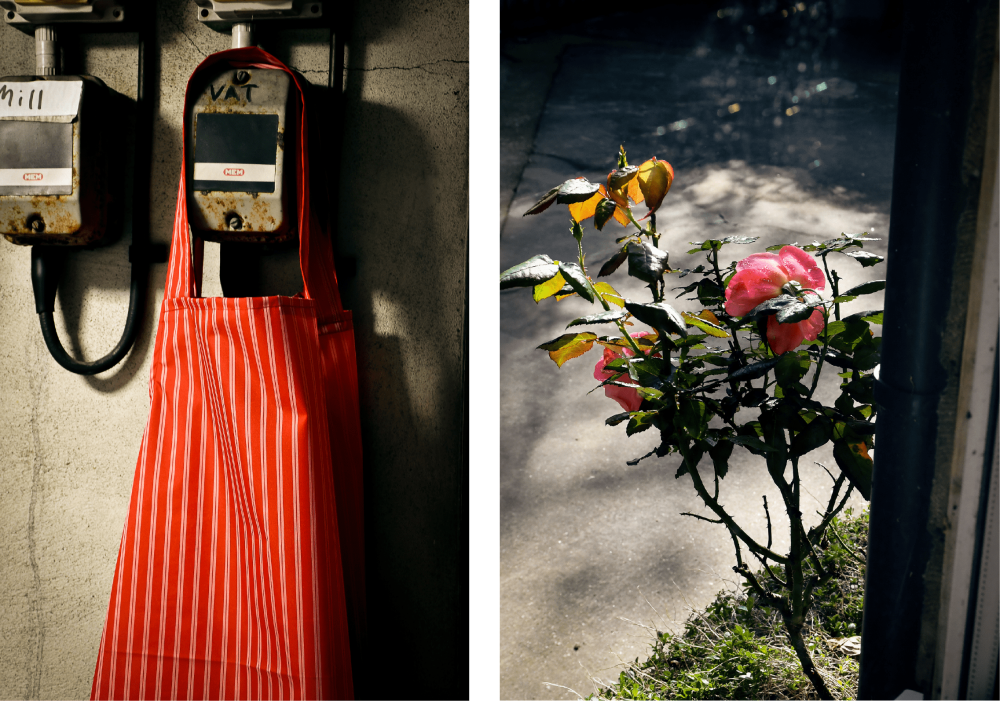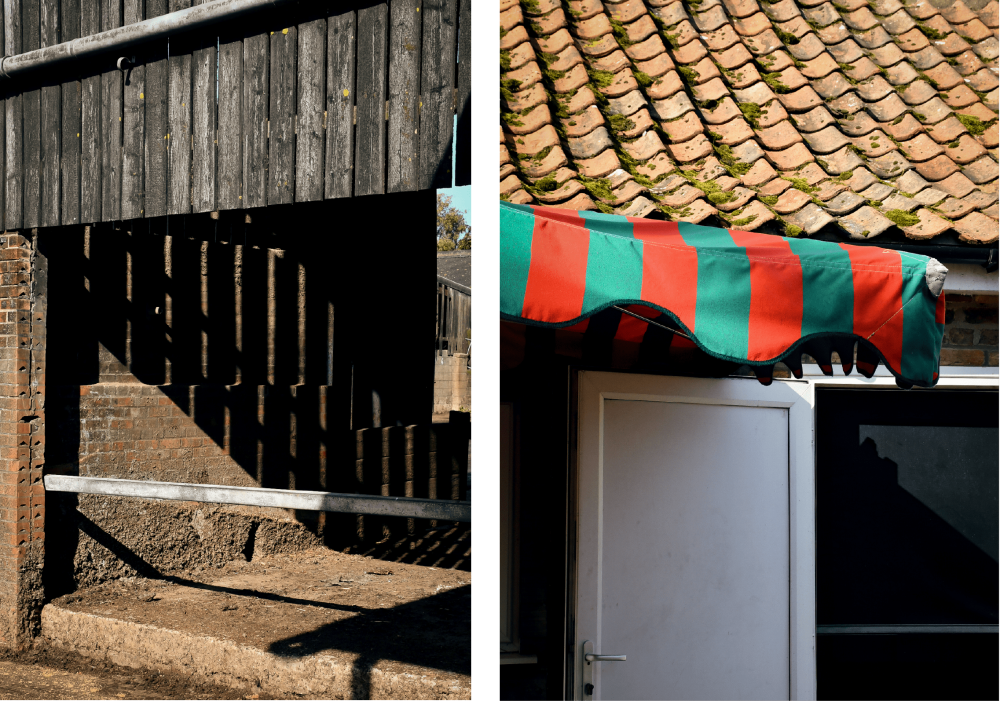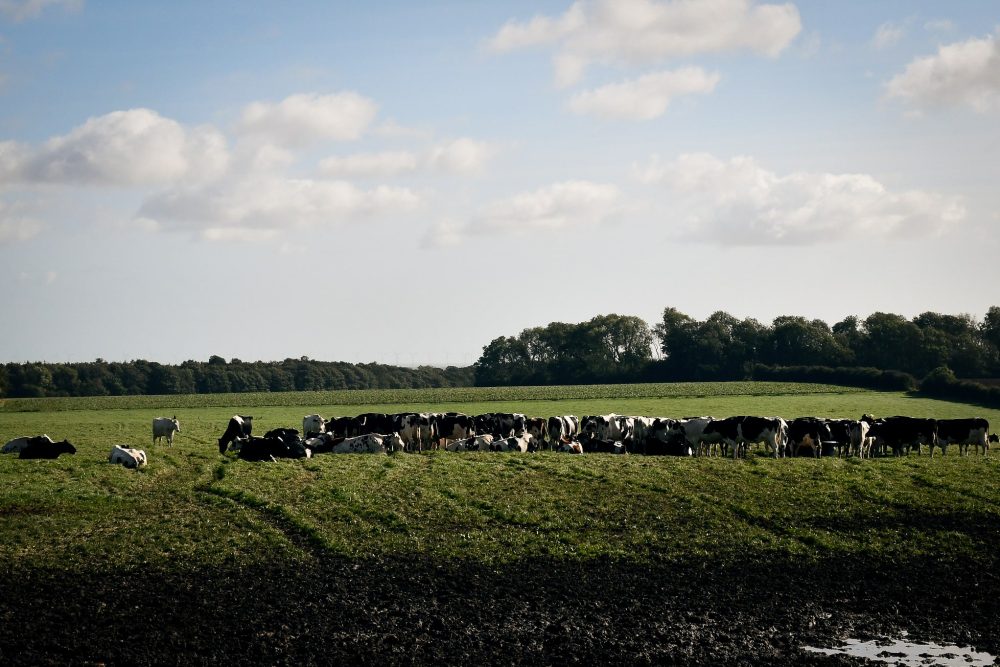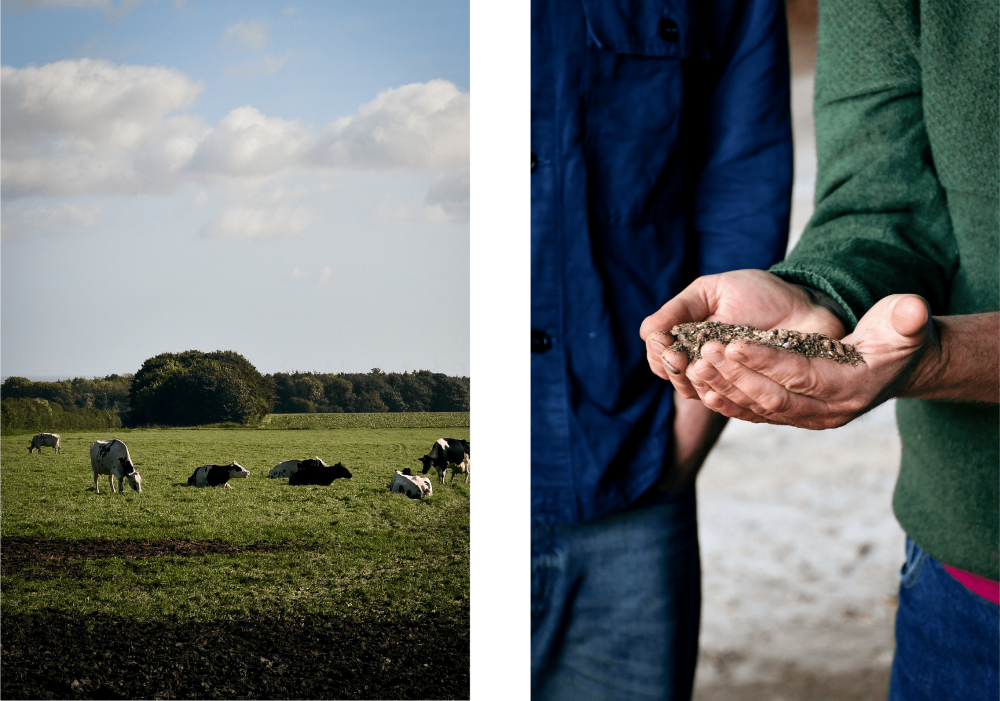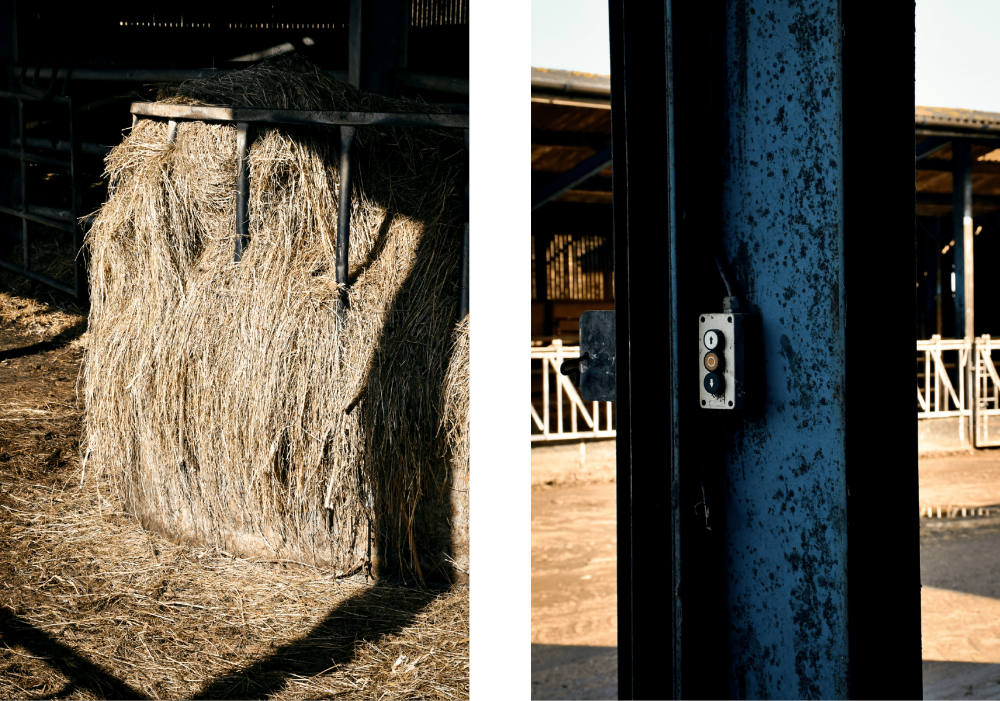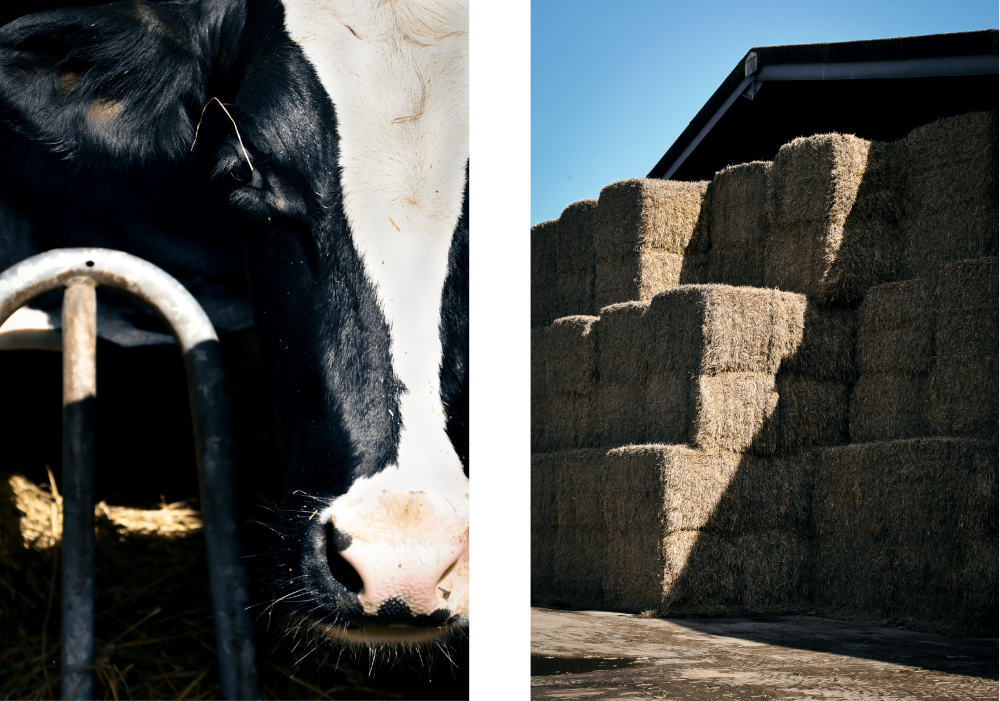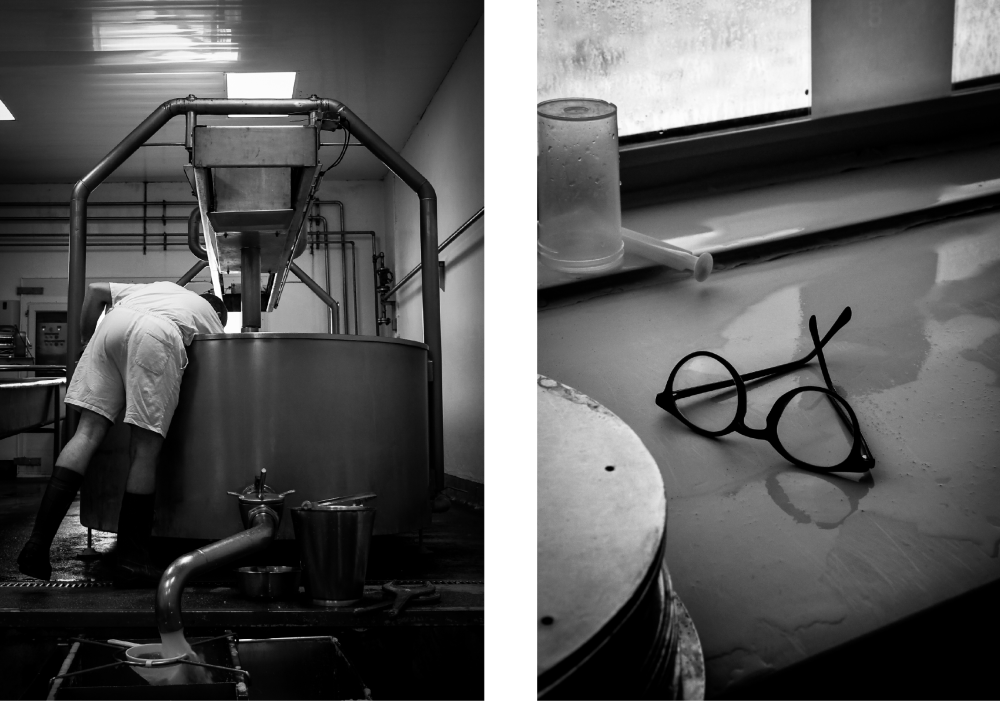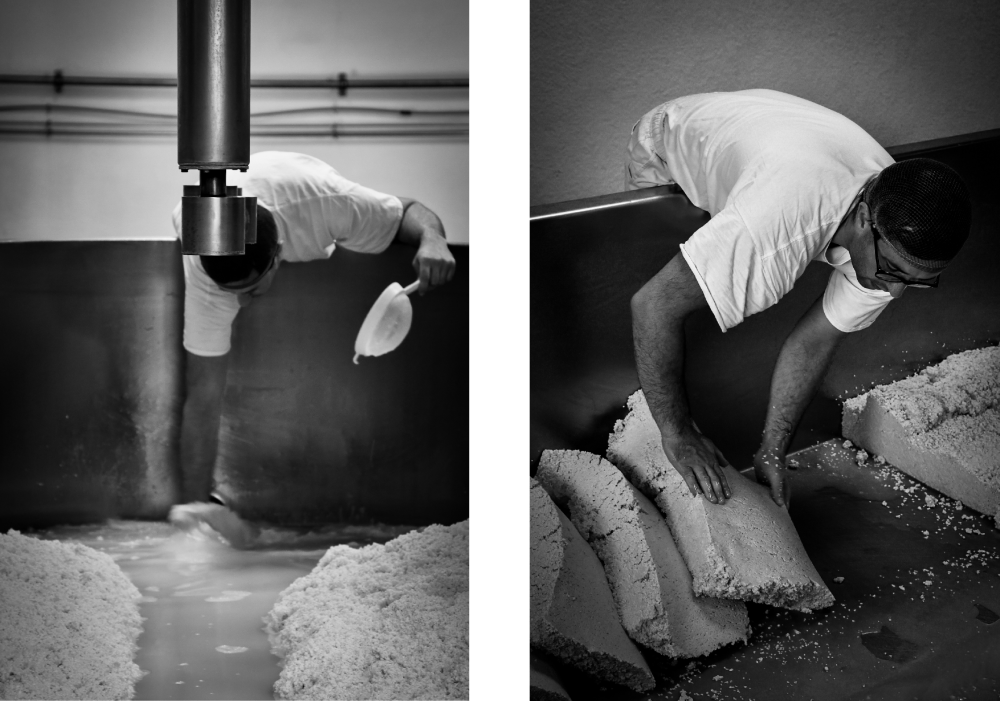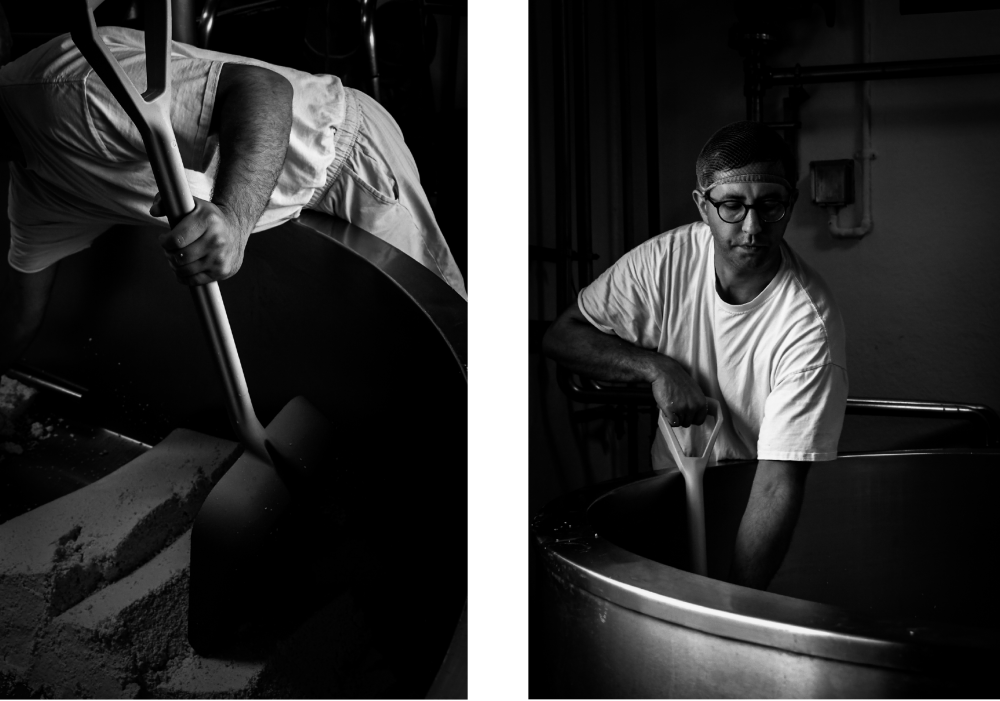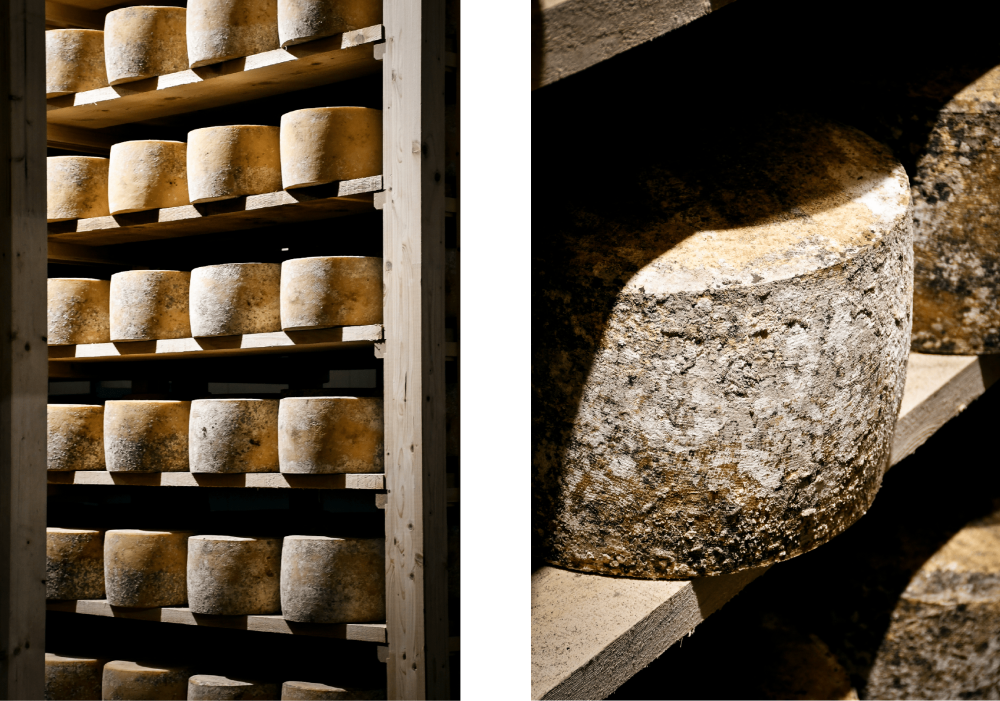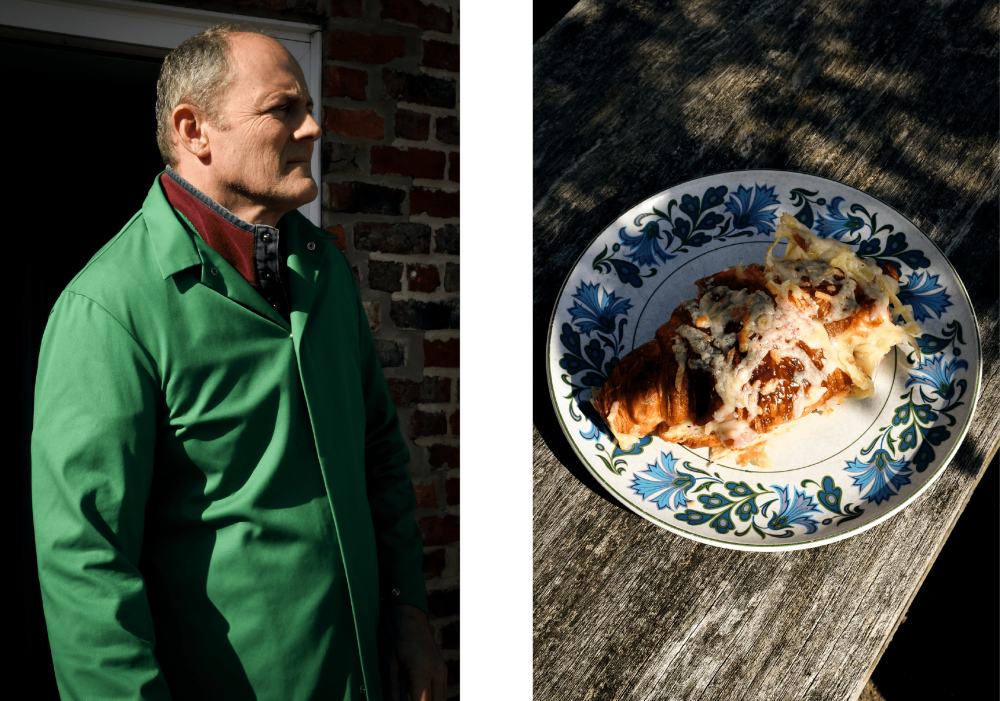Words: Charlie Monaghan
Photography: Hector Marshall
For us, quality is a process, not a product. We always want to work with the best-quality ingredients, but our way of defining what that means is by looking at how food is grown and made – flavour is just an expression of these things, after all. In that spirit, we’re paying a visit to the makers of the cheese in our cheese and ham croissant, Lincolnshire Poacher, to discover how quality emerges from, quite literally, the ground up.
Pictured above: Tim (left) and Simon Jones grew up on their 800-acre farm on the Lincolnshire Wolds and now run the cheesemaking business, which Simon initiated in the early 1990s.
Simon and Tim Jones are the brothers behind a cheese we’ve loved baking with for a couple of years now, Lincolnshire Poacher, but, to tell you the truth, the beginning stages of our relationship did not signal a match made in heaven. In fact, the courtship was initially a little awkward. For one, they make cheese in the traditional, artisan way with unpasteurised milk, which we adore, but which sends food technicians running for PPE (bad bacteria cannot survive on raw-milk cheese aged past 60 days, by the way). Then, because we’d eyed up their cheese for adorning our savoury croissant, we needed them to grate it, something comparable to telling a Premier Cru winemaker to ditch their bottles for cans.
But we made it work, despite the challenges. Why? Because in their approach to their soil, their farm, their animals, their cheesemaking, fermentation, ageing – in short, everything they do –Simon and Tim embody all we know to be true about quality, well-made food. And all the more worthwhile, we think, that it wasn’t a straightforward journey, that the cheese we use isn’t some unanimous commodity. Instead, with the help of our cheesemaker Rhuaridh Buchanan, we built a relationship with Simon and Tim, got to know their business, sent them croissants and even helped them overcome their fears of grating.
To share what we see as beautiful and meaningful in what they do, we thought we’d make a trip to the Lincolnshire Wolds for a look around the farm and dairy, and a chat with the brothers. Here, Simon and Tim guide us through their approach to soil, grass, cheese and their business, demonstrating how quality emerges from their approach to each stage. Behold the beautifully circular process of grass being turned to milk, being turned to cheese, creating a business that nurtures the land and the soil from which the grass grows and the circle repeats…
“With cheese, all the little things you do matter in the end”
THE SOIL
Tim: “The soil is where the story of Lincolnshire Poacher beings. Our father took over the farm in the 1960s from our mother’s family, who arrived here in 1918. Our dad didn’t grow up in the countryside but wanted to be a farmer all his life. When he met our mum and came to Lincolnshire, he decided to put dairy cows here on the Lincolnshire Wolds, which he would never have even thought to have done if he grew up here, yet it was a genius idea. His rationale, which was way ahead of its time, was that soil needs a break crop, and the best break crop is grass or clover lays. And what’s the best thing to utilise grass? Dairy cows.
“You will barely see a dairy cow in the rest of the county. It’s all big farming here: potatoes, sugar beet, wheat, oil seed rape, and on the Fens, it’s all veg. Lots of people laughed at him for starting dairy farming here but he saw that the soil was right for it and now we have a really healthy farm because of his instincts.”
Pictured above, clockwise from top: “When we were growing up, dad always used to say we were on a very pretty farm, which, of course, we didn’t take any notice of. But he was right. A lot of farms are flat and featureless, but we’ve got woods, hills and views of the sea on a clear day,” says Simon. Homegrown wheat, oats and barley go into the silage used to feed the cows.
“The way of most resistance is the way.”
Simon: “We’ve never bought any milk in to make our cheese; it only ever comes from our herd of around 220 cows. What they eat has a massive impact on what the cheese tastes like, and what they eat is massively determined by the soil – so the flavour of the cheese starts with the soil. One of the key things is that we don’t use fertiliser on any of our grasslands because it makes grass bitter – if you don’t use it, you get sweeter grass and better-tasting cheese. With cheese, all the little things you do matter in the end, but this one is especially important.
“I went to visit a well-known dairy, Jasper Hill Farm, in Vermont, and Mateo, one of the cheesemakers, said to me, ‘The way of most resistance is the way.’ It’s always really stuck in my mind. It’s true – it’s always easier to do what looks easy; it’s one of our flaws as humans. But, in farming, that tendency to take what looks like the easy route has got us to a point where people say there are only 100 harvests left because of how we’ve treated the soil. In truth, the only way is to look after the soil. You come back to it, because you have to.”
THE GRASS
Simon: “Cheese, the way we make it, is simply an expression of the milk that was made on a particular day, so getting the cow’s feed right, which translates into the milk they produce, is crucial.
“In summer, the herd is on pasture, but we supplement their diet throughout the year with silage, which we make here on the farm from grass, as well as wheat, oats and barley. Timeliness is everything when making silage, so being able to do it ourselves is increasingly important, especially with changing weather patterns. It’s the bulk of what the cows eat in the winter so it has to be good quality – we don’t want wet, acid silage.
“Interestingly, making silage is the same as making cheese: essentially, you preserve grass by fermenting it. We use cheese starter culture because we want to pickle the grass, which happens when the bacteria eat up the sugars. And then that goes back to feeding the cows – it’s incredible, just one big process.
“Another thing we’ve been adding to the cow’s diet for 15 years now is seaweed because it’s packed with minerals and trace elements that have been lost out of soils. Interestingly, research is now showing seaweed can reduce the amount of methane cows emit, although we didn’t know that when we started buying it!”
Pictured above: The cheesemaking process begins at 6am, when the morning’s milk is mixed with the previous afternoon’s. A small amount of starter is added before the milk is heated and later rennet goes in. The curds are then cut, moisture is drained off, and the curds are milled and salted before being put into moulds to age.
“We add a teaspoon of freeze-dried starter culture to about 6,000 litres of milk.”
THE CHEESE
Simon: “Dad laid the foundations for the cheese with the dairy. Tim and I grew up on the farm, and I went to agricultural college before travelling for quite a while, doing things like motorcycling across Africa. I came back in 1988 and didn’t really know what to do, but dad had always talked about making cheese, so I started learning about it. In February 1992 we made our first batch of cheese with 1,000 litres of milk in an old tank. We did that once a week at first, and then, after six months, Richard, our cheesemaker of 25 years, joined us. In 2022, we made cheese every day of the week; in 2023, we made six out of seven.
“I learnt to make cheese with Dougal Campbell, who is a bit of a legend in the cheesemaking world – although, unfortunately, he is no longer with us. He learnt to make cheese in the French Alps, so that’s why our cheese is somewhere between an Alpine-style and a Cheddar-style cheese. It has evolved too: the cheese I made in 1992 is not the cheese we make now, which we have refined over the years to be one we and our customers love, but also one that suits our milk.
“The beauty of what we do is that almost all of the bacteria needed to start fermenting the milk comes from the milk itself. The chilled milk from the previous afternoon’s milking is mixed with the warm morning’s milk, which, because it’s raw, contains lots of live natural bacteria. We add a teaspoon of freeze-dried starter culture to about 6,000 litres of milk.”
Pictured above, clockwise from top left: An outlet in the vat is opened once the curds have formed to drain the whey out. The curds are then cut and stacked, and more moisture is released. “It’s a very physical job, making cheese,” says Simon.
“Our cheesemaking process is about creating the conditions for a long, slow maturation period”
Pictured above: the on-site maturation store is a vast expanse of wooden shelves that were specifically engineered to work with the cheese-turning robot, named Florence the Machine (seen bottom right), which automatically turns the cheese wheels so that moisture is evenly distributed.
Tim: “We use a fraction of what you would use in a commercial setting because the milk is so alive and there’s so much natural activity in there. Commercial cheesemakers will source milk from lots of different farms and then boil it all to standardise it. The flavour of their cheese comes from the starter they add, whereas ours comes from the milk itself.
“The other major difference is that commercial makers will then age their cheese in plastic bags, which keeps in moisture, which equals weight. Our cheesemaking process is about creating the conditions for a long, slow maturation period, which we do by getting rid of as much moisture from the curds as possible.
“The ageing process for cheese is comparable to air-dried ham or wine: it’s adding to the complexity and interest of the cheese, both in terms of flavour and texture. Another eight per cent of the initial weight is further lost as the cheese dries, but that means the flavours concentrate and the texture becomes firmer – many commercial cheddars cut like butter because they are so full of moisture.”
Pictured above, clockwise from top left: Wheels of cheese are aged for a minimum of 14 months before they can be classed as Lincolnshire Poacher, but a Red variety is aged for six months, and a vintage variety is aged for up to 22 months. Lunch was a GAIL’s ham and cheese croissant with Lincolnshire Poacher, naturally . Tim stands outside the packing room in the winter sunshine.
“Because we don’t do anything to the milk, there is variation in every batch”
THE BUSINESS
Simon: “Standardisation and the mass production of food has been a big thing since the Second World War, and while it’s created huge abundance, it’s also taken a lot of interest and difference out of the things we eat. That means when people do experience artisanal food – which will inevitably have nuances – there needs to be a conversation about how it is different from commercially made products.
“Because we don’t do anything to the milk, there is variation in every batch. We have to tell people at farmers’ markets that the cheese they buy today will taste slightly different to the cheese they buy the following month. It will always be good, but the flavour profile will be ever-so-slightly different, which is what we think makes it interesting.
“Fortunately, we have found customers at farmer’s markets and in businesses like GAIL’s, who embrace the subtle variations in cheeses like ours, and who value the way we make it, with transparently sourced ingredients and traditional methods.
“When people buy our cheese, they – inadvertently or intentionally – invest in the countryside here and the farming practices we believe in. The fact we make cheese means we can reinvest in the thing that begins it all in the first place: the soil. And by looking after the soil we look after the grass, which translates into the milk that becomes the cheese. It’s a fully circular process.”
So, some food for thought, we hope – perhaps digested over your next ham and cheese croissant? Working with Simon and Tim is, for us, a delight and a pleasure, as they truly embody our belief that food that is led by nature and the seasons embraces variation and which comes from good farming practices is what all food should be. Stay tuned for more stories like this, and be sure to subscribe to our newsletter to receive them as they come out.
